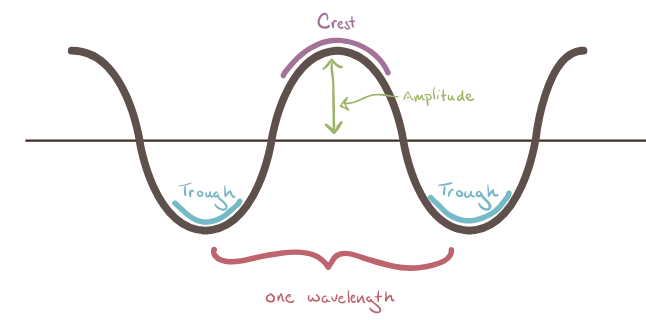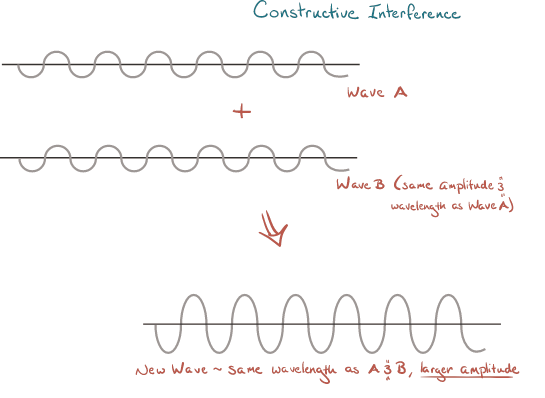Diffraction and Constructive and Destructive Interference | Physics for MCAT PDF Download
| Table of contents |

|
| Introduction |

|
| Electromagnetic Waves |

|
| Wave Interference |

|
| Double-Slit Interference |

|
| Single-Slit Diffraction |

|
| Double-Slit Interference with Diffraction |

|
| Real-World Applications |

|
Introduction
Our heroes find themselves in a dire situation, desperately trying to establish contact with their lost team member using a walkie-talkie. However, they encounter a frustrating obstacle: interference. But what exactly is interference, and how does it affect waves? In this article, we delve into the captivating phenomena of diffraction and constructive and destructive interference. Join us as we explore the intricate interplay of electromagnetic waves and uncover the secrets behind these intriguing wave behaviors.
Electromagnetic Waves
- Exploring the Electromagnetic Spectrum: From infrared waves to radio waves, ultraviolet waves to microwaves, various forms of electromagnetic waves exist.
- Understanding Wavelength: Each wave has a unique wavelength that determines the distance over which its amplitude changes.
- Diverse Wave Ranges: While radio waves can possess extensive wavelengths, visible light waves can be as minuscule as a thousandth of a human hair's width.

Wave Interference
- The Concept of Wave Interference: When two waves come into proximity, their effects combine.
- Constructive Interference: Waves that are perfectly aligned result in constructive interference, creating a new wave with an amplified amplitude.
- Destructive Interference: Misaligned waves lead to destructive interference, where the resulting combined wave exhibits reduced amplitudes compared to the individual waves.
- Complete Cancellation: When two waves with the same amplitude are shifted by half a wavelength, they perfectly align and cancel each other out, resulting in no wave at all.
Double-Slit Interference
- Introducing the Double-Slit Experiment: Utilizing a laser pointer and a card with two tiny slits, we observe the behavior of light waves passing through.
- Interference at the Wall: As waves approach the wall, they interfere with each other, creating a distinctive pattern of light and dark spots.
- Constructive and Destructive Interference: Analyzing the path lengths of the waves from each slit to the wall reveals points of constructive and destructive interference.
- Bright and Dark Spots: The resulting pattern alternates between bright spots, where constructive interference occurs, and dark spots, where destructive interference dominates.

Single-Slit Diffraction
- Unveiling Single-Slit Diffraction: Even with only one slit, wave interference can still occur, leading to intriguing diffraction patterns.
- Examining Path Lengths: Comparing the path lengths of waves originating from different points within the single slit reveals the interference pattern.
- Constructive Interference at the Center: Points symmetrically across the slit exhibit constructive interference, resulting in a major bright spot at the center.
- Destructive Interference and Dark Spots: By analyzing points with a half-wavelength difference in path lengths, we discover dark spots with destructive interference.
Double-Slit Interference with Diffraction
- The Combined Phenomena: Recognizing that multiple light waves pass through each slit simultaneously, we explore the interplay between interference and diffraction.
- Individual Diffraction Patterns: Each slit generates its own diffraction pattern, which combines to form a "single-slit" diffraction pattern.
- Limiting Brightness: The diffraction pattern limits the intensity of the bright spots in the interference pattern, resulting in variations of brightness across the wall.
- Interference from Two Slits, Diffraction from Each Slit: Understanding the distinct contributions of interference and diffraction to the overall pattern.

Real-World Applications
- Walkie-Talkie Interference: Applying the principles of interference to real-life scenarios, such as walkie-talkie signals interacting with obstacles like cliffs.
- Optimal Interference: Adjusting the distance between the receiver and the cliff to exploit constructive or destructive interference for a better signal.
Conclusion
In the face of interference, understanding the captivating phenomena of diffraction and constructive and destructive interference allows us to unlock the secrets behind wave behaviors. From the fascinating interplay of electromagnetic waves to the intricate patterns of light and dark spots, these phenomena provide valuable insights into the behavior of waves. By delving into these concepts, we gain a deeper appreciation for the remarkable world of wave interference and its applications in various fields.
|
158 videos|21 docs|21 tests
|















